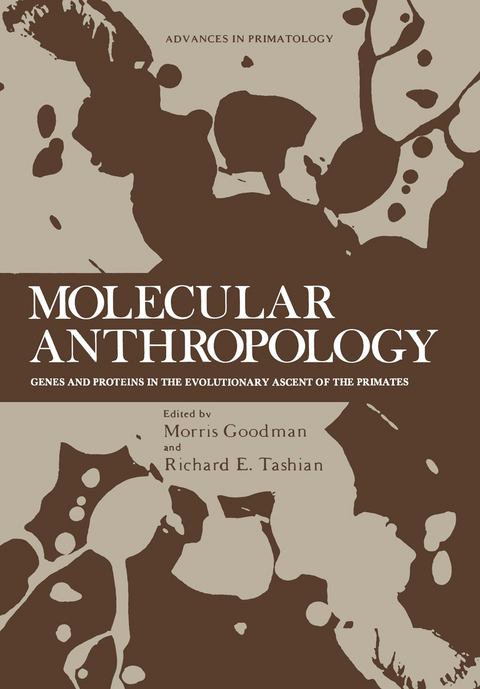
Molecular Anthropology
Springer-Verlag New York Inc.
978-1-4615-8785-9 (ISBN)
I. Background to Some Key Issues.- 1 What Is Molecular Anthropology?.- 2 Mutation and Molecular Evolution.- 3 The Fossil Record of Primate Phylogeny.- 4 Splitting Times among Hominoids Deduced from the Fossil Record.- II. Molecular Evolution as Interpreted by Mathematical Models.- 5 Information Theory, Molecular Evolution, and the Concepts of von Neumann.- 6 Random and Nonrandom Processes in the Molecular Evolution of Higher Organisms.- 7 Proof for the Maximum Parsimony (“Red King”) Algorithm.- III. Primate Phylogeny and the Molecular Clock Controversy.- 8 Molecular Systematics of the Primates.- 9 Immunodiffusion Evidence on the Phylogeny of the Primates.- 10 Evolutionary Rates in Proteins: Neutral Mutations and the Molecular Clock.- IV. Primate Evolution Inferred from Amino Acid Sequence Data.- 11 Evolution of the Primary Structures of Primate and Other Vertebrate Hemoglobins.- 12 The Hemoglobins of Tarsius bancanus.- 13 Old World Monkey Hemoglobins: Deciphering Phylogeny from ComplexPatterns of Molecular Evolution.- 14 Structure and Function of Baboon Hemoglobins.- 15 Evolution of Myoglobin Amino Acid Sequences in Primates and Other Vertebrates.- 16 Evolution of Carbonic Anhydrase in Primates and Other Mammals.- 17 Toward a Genealogical Description of the Primates.- V. Multigene Families and Genetic Regulation in the Evolution of Man.- 18 Comparative Aspects of DNA in Higher Primates.- 19 Evolutionary Origin of Antibody Specificity.- 20 Programs of Gene Action and Progressive Evolution.
| Reihe/Serie | Advances in Primatology |
|---|---|
| Zusatzinfo | XIII, 466 p. With online files/update. |
| Verlagsort | New York, NY |
| Sprache | englisch |
| Maße | 178 x 254 mm |
| Themenwelt | Naturwissenschaften ► Biologie ► Evolution |
| Naturwissenschaften ► Biologie ► Zoologie | |
| ISBN-10 | 1-4615-8785-9 / 1461587859 |
| ISBN-13 | 978-1-4615-8785-9 / 9781461587859 |
| Zustand | Neuware |
| Haben Sie eine Frage zum Produkt? |
aus dem Bereich


